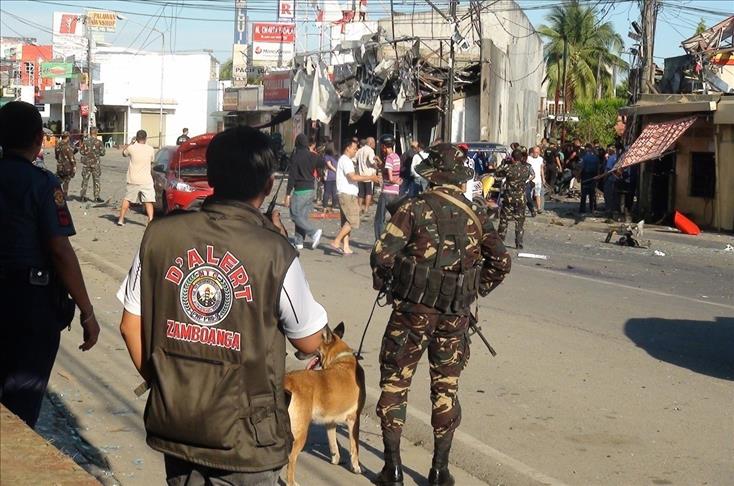No Marwan bounty for families of slain Filipino police
Police official says only civilians can claim $5 million FBI bounty for Malaysian bomb-maker reportedly killed in raid

By Roy Ramos
ZAMBOANGA CITY, Philippines
Families of the 44 Philippine police commandos killed in an operation in pursuit of the most wanted terrorist in Southeast Asia cannot claim the $5 million FBI bounty on his head, a police official said Friday.
Malaysian bomb-maker Zulkifli bin Hir, alias Marwan, was reportedly killed in a fatal Jan. 25 raid in the southern Philippine province of Maguindanao that also claimed the lives of more than a dozen rebels and civilians.
Earlier this week, the FBI confirmed that DNA evidence from a finger – allegedly cut off from a corpse during an exchange of gunfire -- proved the dead man to be Marwan.
Amid calls that the U.S. government bounty be split among the families of the slain commandos, Senior Supt. Jose Gentiles, police attaché at the Philippine Embassy in Washington, said only civilian informants are eligible to claim the reward.
"As a general rule, no government employee linked to the SAF [Special Action Force] or Philippine National Police or the Philippine Army or any member of Armed Forces of the Philippines... is eligible to receive any bounty because it's part of their job to arrest a wanted person," ABS-CBN News quoted him as saying.
He explained that the reward, offered as an incentive to speed up efforts in locating a wanted person, would be given to the parties who provided the information.
Gentiles said the identity of the informant would remain confidential.
House Representative Neri Colmenares had earlier called on the Philippine government to give the reward to the killed commandos’ families, saying in a statement that such a move “may somewhat compensate for the loss of their loved ones."
Such calls were also backed by lawyer-columnist Melanio Mauricio, who argued “there are no civilian informers who can lay claim to the reward money” since Marwan “was traced and ultimately through the intelligence reports” of the Philippine national police.
For weeks, confusion has reigned as to whether Marwan had actually died in the operation, with a spokesman for one rebel group -- the Moro National Liberation Front -- even claiming that not only was Marwan still alive, he wasn't even in the area at the time of the raid.
The FBI later confirmed the DNA evidence from the raid was matched with that obtained from Marwan’s brother, who is detained at the U.S. military prison in Guantanamo Bay, Cuba.
"Although the results of the DNA examinations do not provide absolute identification, the results do support that the biological sample provided by Philippine authorities came from Marwan,” David Bowdich, assistant director of the FBI’s Los Angeles field office, said in a statement.
“Further testing and analysis will be conducted by laboratory examiners in an effort to fully identify the subject of DNA provided to the FBI."
Jose Cuisia Jr., the Philippines’ Ambassador to the U.S., expressed his condolences to the relatives of the slain officers, and thanked the FBI for quickly confirming the DNA samples.
"That should dispel any doubts that people have that it was Marwan,” he told ABS-CBN, adding, “of course we lost 44 heroes unfortunately but I think we are, of course gratified to know that this very dangerous, very much sought after terrorist has finally been eliminated.”
Marwan was a leading figure in Jemaah Islamiyah, the al-Qaeda-linked Southeast Asian group behind the 2002 Bali bombings in
His brother, Rahmat Abdhir, was arrested in California in 2007 on terrorism charges, accused of sending Marwan weapons, camouflage clothing and nearly 30 radios -- parts of which were discovered to have been used in a bomb that killed five people in the Philippines in 2006.
Their youngest brother, Taufik bin Abdul Halim, was also arrested on terrorism charges in 2001 for his role in the bombing of the Atrium Mall in Jakarta, Indonesia.
Anadolu Agency website contains only a portion of the news stories offered to subscribers in the AA News Broadcasting System (HAS), and in summarized form. Please contact us for subscription options.







